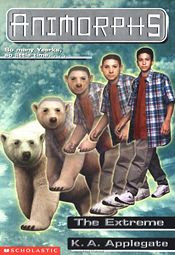Eskimo scholar K.A. Applegate speculates that the evolutionary process of man looks something like this.
Courtship
Like with all courtship, it starts with finding a prospective mate. Because typical Eskimo garb (heavy parkas, corpses of slain walruses, etc) does not lend itself to show off the finer curves of a female Eskimo, accidental homosexuality runs rampant in Eskimo culture.
However, when a suitable mate is found, the male shows interest by constructing a giant phallus in the snow. The female, in response, will either draw a heart in the snow (signifying mutual interest) or make an off color remark about how she’s had bigger (signifying she’s had bigger).
Commitment Ceremony
You may argue that an Eskimo commitment ceremony should merely be called a “marriage.” This is wrong for two reasons: one, by referring to a step in the Eskimo mating cycle as marriage, we weaken the sanctity of Western Civilization’s preconceived notion of marriage and two, Eskimos are an extremely progressive people and although accidental homosexuality does occur, the Inuit believe that it’s okay for some people to make the same mistakes over and over again.
Much like wolves, black vultures and anglerfish, Eskimos mate for life. When the time comes for the commitment ceremony, the tribe’s shaman leads the proceedings. In addition to a shaman, every tribe also possesses an Orwellian Nightmare Machine that simulates Nineteen Eighty-Four with startling realism. Hand in hand, the Eskimo couple enters the machine only to emerge a day later with a deeper appreciation for not only each other, but also for the various works of George Orwell.
Reproduction Cycle
The gestation period for Eskimos is roughly 7 months. When it comes time for copulation, the female lays her eggs in the male’s stomach. When the eggs hatch, the baby Eskimos push through their father’s skin into the light of day. Normally, this would cause great pain to a living creature, but Eskimo skin is extremely porous and elastic to the point where the hatching process causes no discomfort for the father.
Although hundreds of baby Eskimos hatch, many fall prey to penguins, killer whales and polar bears, so only a small percentage actually reach adulthood.



No comments:
Post a Comment